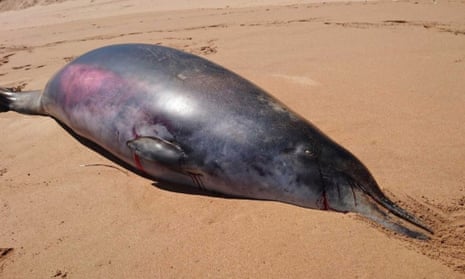Scientists believe they have an uncovered an evolutionary throwback in a rare deep ocean whale that washed ashore on a South Australian beach.
The beaked whale, found dead on Waitpinga beach in February, confounded examiners from the South Australian Museum who discovered two mysterious teeth previously unseen in that family of deep diving mammals.
Appeals to museum colleagues across the world, including at the renowned Smithsonian Institute in the US, have yielded no answers on the vestigial fangs, which are small and pointy.
The ABC reported the teeth are not believed to be a deformity but an evolutionary throwback, or a trait that reappears after generations.
South Australian Museum senior researcher Catherine Kemper told the ABC that the teeth, which defied the known norm in female whales by erupting above the jawline, were “very odd … something I had never seen before”.
“My mind was thinking, ‘Do we have something new here?’,” Kemper said.

After the whale skull was stripped clean, the museum’s collections manager, David Stemmer, yanked the tooth and was surprised to find the larger tooth of a Hector’s beaked whale underneath.
“It was still exciting and although we now knew we had a species we know, it’s a species we don’t get very often and it’s only the third specimen we have collected here in South Australia,” Stemmer told ABC.
The museum team hopes the cataloguing of the carcass will help unlock the mystery of the teeth and reveal more about the species, seldom encountered because of their deep sea habitat and presumed rarity.
Kemper said conservation of little-known species could depend on these kinds of revelations.
“Without that knowledge, it’s just very difficult to know what’s going on and to monitor whether they’re doing alright,” she said.

Comments (…)
Sign in or create your Guardian account to join the discussion